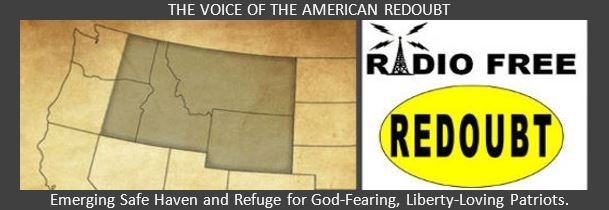The following is another great article by Partisan. As many of you know, he is senior editor at the blog/website Guerrillamerica.com. Enjoy! …and take notes.
-JJS
_______________________________________
Today we’ll discuss the French Resistance against Nazi occupation and what made it particularly effective. I think we can boil it down to a few points, on which I’ll elaborate. I’ll also draw comparisons between the French Resistance and the potential American Resistance.
Beginning with the month-long collapse of the French Army at the hands of the Nazis until Nazi defeat in France at the hands of the Allies, the French Resistance pursued sabotage, direct action, subversion, assassination, and infiltration at great human cost: lethal reprisals against the civilian population and ungodly torture of resistance operatives. Consisting of one to two percent of the total French population, La Résistance was a decentralized, fractured, and multi-party organization. Instead of the Resistance being one solid, unified group, what we really find is a labyrinth of unorganized and largely unaffiliated groups that, toward the end of the war, finally cohered into a more unified organization.
Multi-effort.
Numerous resistance groups fought against the Occupation under the umbrella of French Forces of the Interior. Additionally, we see precursors to contemporary special operations force groups like the British Special Operations Executives (SOE) and American OSS Jedburgh teams. To get an idea of just how many existed, historical consensus identifies eight major resistance groups and another half dozen minor groups.
In the later years of the occupation (’42-’44), many of the different resistance groups, despite their positions on the ideological spectrum, banded together under the Conseil National de la Resistance (National Council of the Resistance) with the primary and singular goal of expelling the Nazi occupation and removal of the collaborative Vichy Regime. (The Vichy Regime was the French government installed in southern, non-occupied France led by Marshal Petain, who shared pro-Nazi sentiments, i.e., a puppet government.)
I think we can easily draw comparisons today to the many groups of the Liberty movement. The Watchmen, the American Resistance Movement, State Constitutional Militias, regional and local militias, the Frontiersmen, unaffiliated III%ers, and partisan and irregular resistance cells are all examples (and I’m probably missing some) of American resistance groups.
Some call for a national organization with top down leadership and structure. Don’t do it. Stay local. See the next paragraph for why this is important, at least in the short term.
Organizational strengths.
 The Maquis, rural bands of French irregular fighters (colloquially, “the bush”), are particularly interesting. One part of the Maquis that I love is its semi-cellular organization. The model is based on a pyramid (see right), where each three man cell has a place; one cell leader and two cell members. The cell leader would know the identities and locations of the two subordinates, but the subordinates didn’t know the location of the leader. This way, each cell member, if caught, could only give up two members and the members of the cell could never give up the location of the cell leader. This mitigated the risk of actionable intelligence collection upon capture. It should go without saying that many of these members who found themselves captured by Nazi occupiers were brutally beaten, tortured, and ultimately killed. There were some – few – who resisted torture without giving up useful information. In a real world scenario, unless a cell member was captured in front of witnesses, the other cell members may never know that their teammate had been captured. I would imagine they had a system of check-ins or dead drop communications where by if one member hadn’t checked in by a certain time or hadn’t passed communication, then the cell would gather their belongings and move somewhere entirely different. Ideally, each member of these teams would have a mechanism or trigger if the cell had been compromised. (I should add that in a contemporary situation, counterinterrogation techniques would be applied until it was near certain – as certain as possible – that the rest of the cell had disbanded or moved altogether. The use of codenames or handles would mitigate the risk of actionable intelligence. It’s much easier to change a codename than it is the name on your driver’s license or local government database. In some cases, the use of mulitple codenames would serve to confuse and protract a search for the resistance operative.)
The Maquis, rural bands of French irregular fighters (colloquially, “the bush”), are particularly interesting. One part of the Maquis that I love is its semi-cellular organization. The model is based on a pyramid (see right), where each three man cell has a place; one cell leader and two cell members. The cell leader would know the identities and locations of the two subordinates, but the subordinates didn’t know the location of the leader. This way, each cell member, if caught, could only give up two members and the members of the cell could never give up the location of the cell leader. This mitigated the risk of actionable intelligence collection upon capture. It should go without saying that many of these members who found themselves captured by Nazi occupiers were brutally beaten, tortured, and ultimately killed. There were some – few – who resisted torture without giving up useful information. In a real world scenario, unless a cell member was captured in front of witnesses, the other cell members may never know that their teammate had been captured. I would imagine they had a system of check-ins or dead drop communications where by if one member hadn’t checked in by a certain time or hadn’t passed communication, then the cell would gather their belongings and move somewhere entirely different. Ideally, each member of these teams would have a mechanism or trigger if the cell had been compromised. (I should add that in a contemporary situation, counterinterrogation techniques would be applied until it was near certain – as certain as possible – that the rest of the cell had disbanded or moved altogether. The use of codenames or handles would mitigate the risk of actionable intelligence. It’s much easier to change a codename than it is the name on your driver’s license or local government database. In some cases, the use of mulitple codenames would serve to confuse and protract a search for the resistance operative.)
Additionally, the tactical formation of the Maquis was brilliant. Utilizing three man teams, they assassinated Nazi officers and soldiers in the street. The point man typically acted as a scout who walked ahead of the other two; he might have even picked out the targets. The third man stayed behind and was utilized as the “fixing force”. In other words, he might engage or distract a Nazi officer; while the second man was the “exploitation force” and killed the otherwise distracted Nazi. Looting of money, identification cards, weapons, and ammunition ensued. In all, any given attack could take a minute or less and they could disperse. They picked off Nazi after Nazi using speed and surprise; conventional tactics on a micro scale. This is was the premier, decisive, quick strike tactic of the Maquis irregular.
For security reasons, the three-man team would have a pre-cached weapon or have an unassuming accomplice deliver the weapon moments before they struck and then the same or different unassuming accomplice would take possession of the weapon.
___________________________________________
Final thought by JJS:
For those of us who are not as optomistic about the future of our nation (unless it changes its ways), we should be thinking about… NO! Planning for ‘Plan-B.’ That is, how we will respond to what will come to our nation if we don’t return to our core American Judeao/Christian values, heritage, and ideals, and STOP the enemy’s agenda. Others have been here before. We would benefit greatly by learning from the experiences of those who’ve gone before us.




No Comment